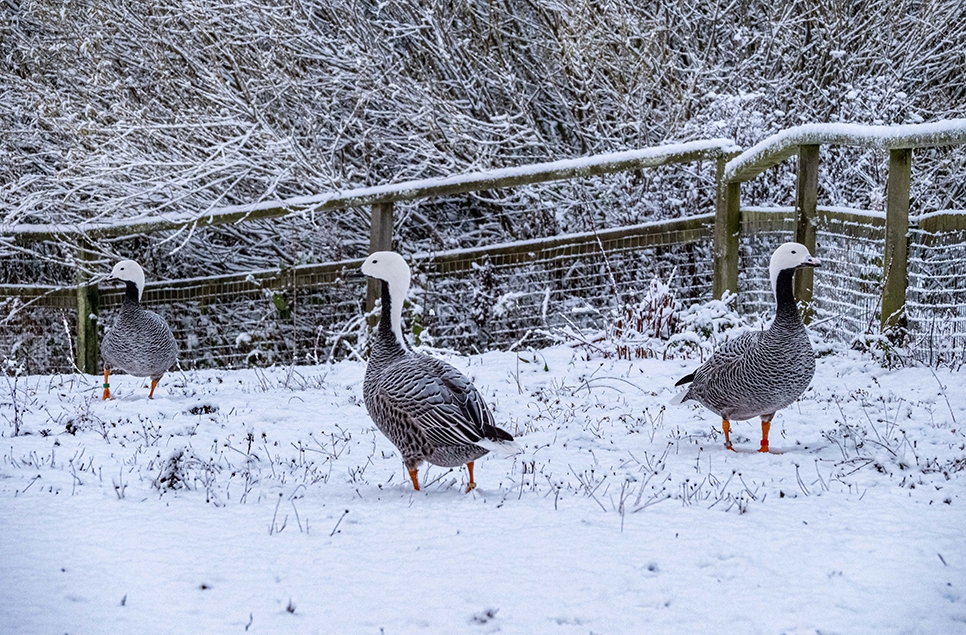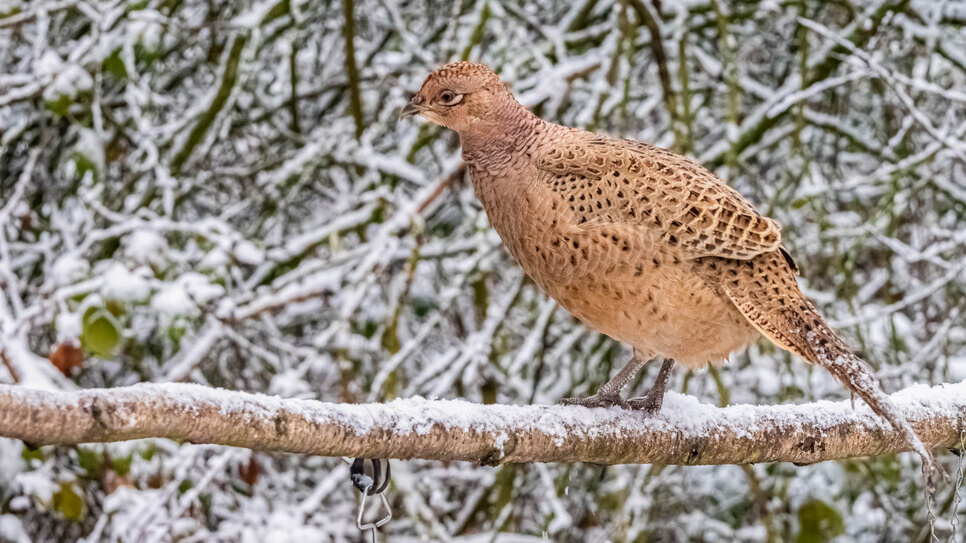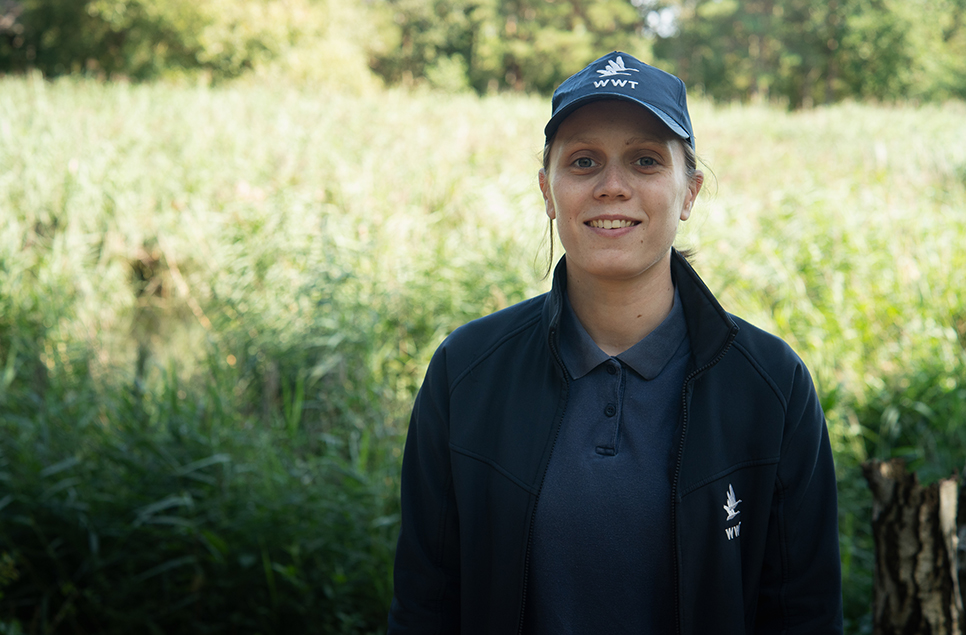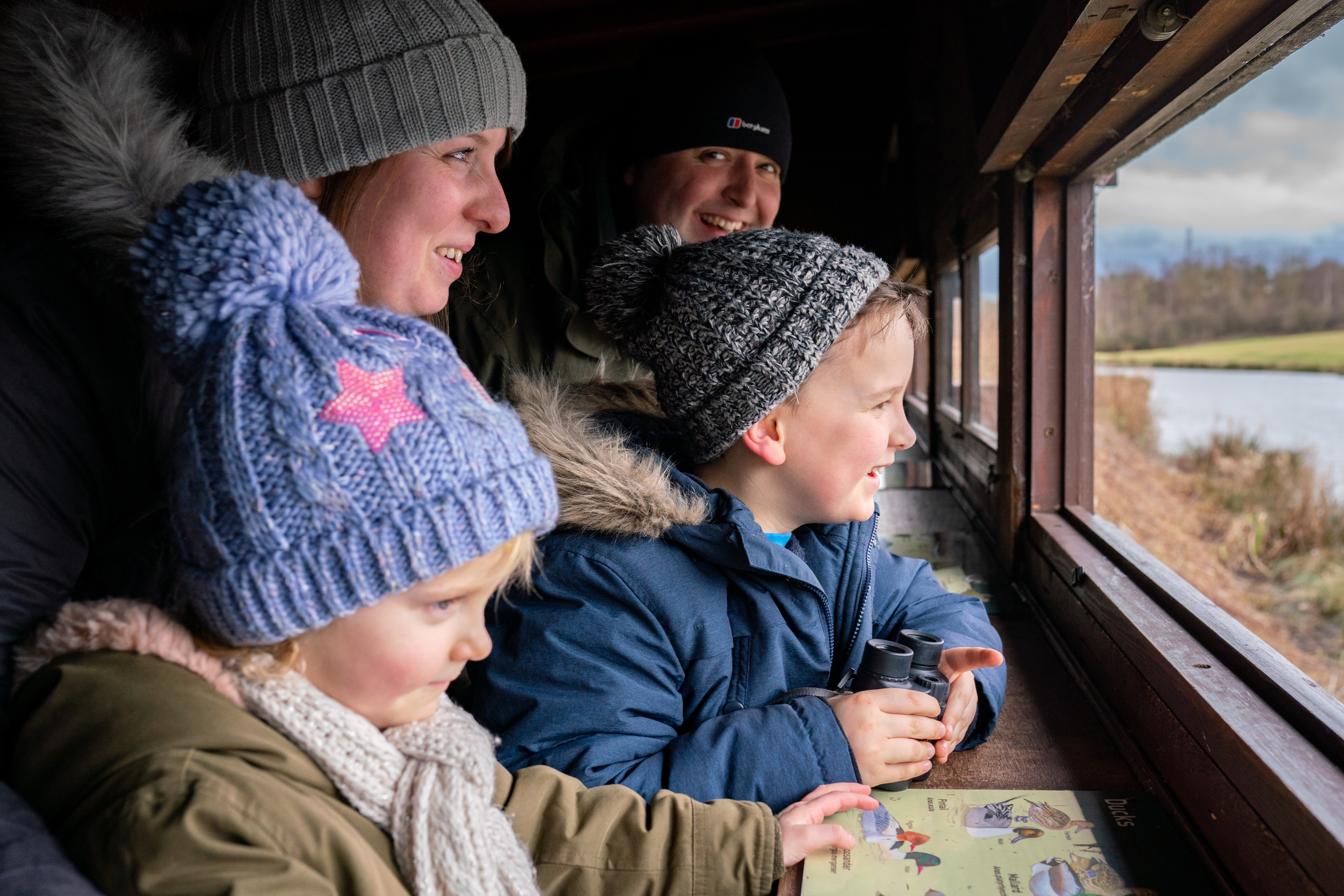Top tips to IDing juvenile birds in Hawthorn Wood
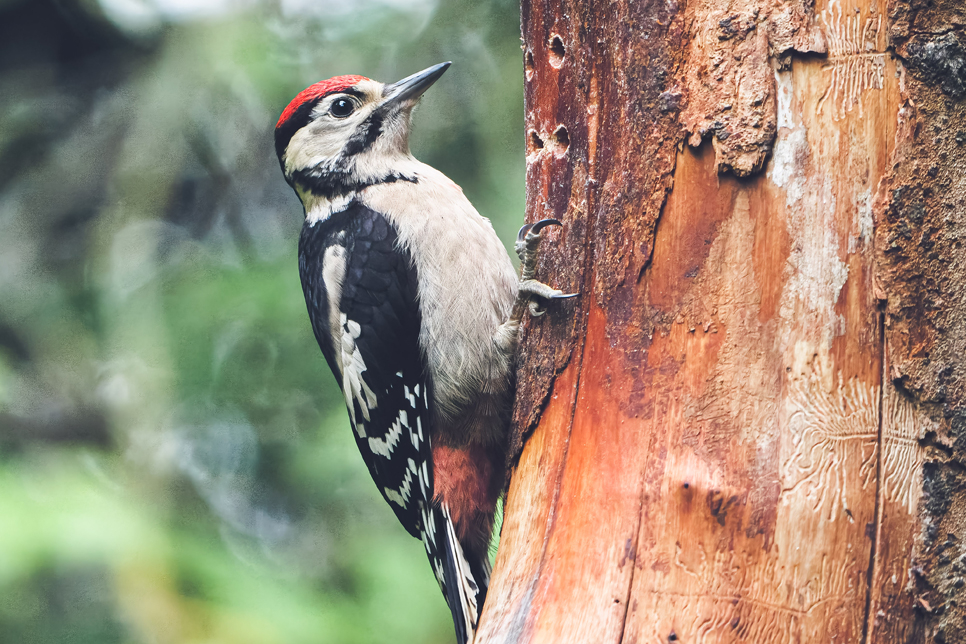
Summer sounds and fledglings galore in Hawthorn Wood Hide can cause some ID confusion
- Blog written by reserve volunteer Melissa Young
Hawthorn Wood hide has to be one of my favourite places out on the reserve, and whilst it goes a little quiet during the spring as birds concentrate on nesting, summertime sees it come back to life with lots of feathered visitors.
However, this can also be quite a confusing time as a variety of different fledglings come to visit along with their parents. So how can you tell the young birds apart?
Youngsters can often be seen nosily begging for food from the adult birds, stretching their heads forward and fluttering their wings to make sure they get mum and dad’s attention. You can also spot some species by their distinct plumage - the young birds look quite different from the adults until they undergo their autumn moult and get their adult colours.
The Key Species To Look For
Bullfinch
Young bullfinch probably cause the most confusion as they lack that distinctive black head you’ll see in adult birds. Both male and female birds start out with the colouring you’d expect from an adult female, but that dull reddish colour extends all the way over their heads. As they start to moult in the autumn it is easier to spot which ones are the males as they sport more pink or grey feathers over time.
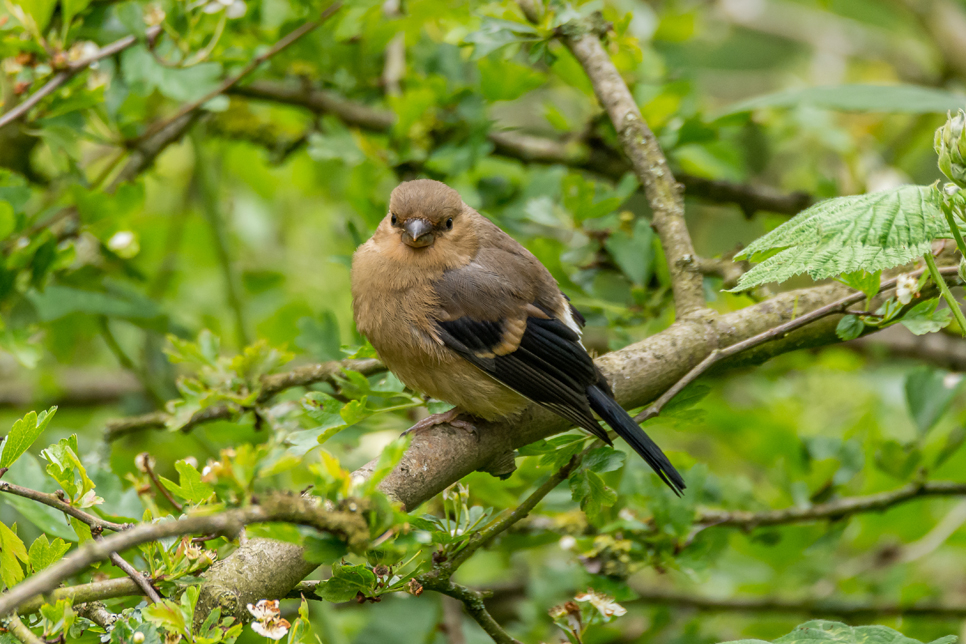
Chaffinch
As with bullfinches, all chaffinches start with the colouring of an adult female. However, they look almost identical to an adult so the only reliable indicator that the chaffinch you’re looking at between June & August is a fledgling is if it is begging for food and being fed.
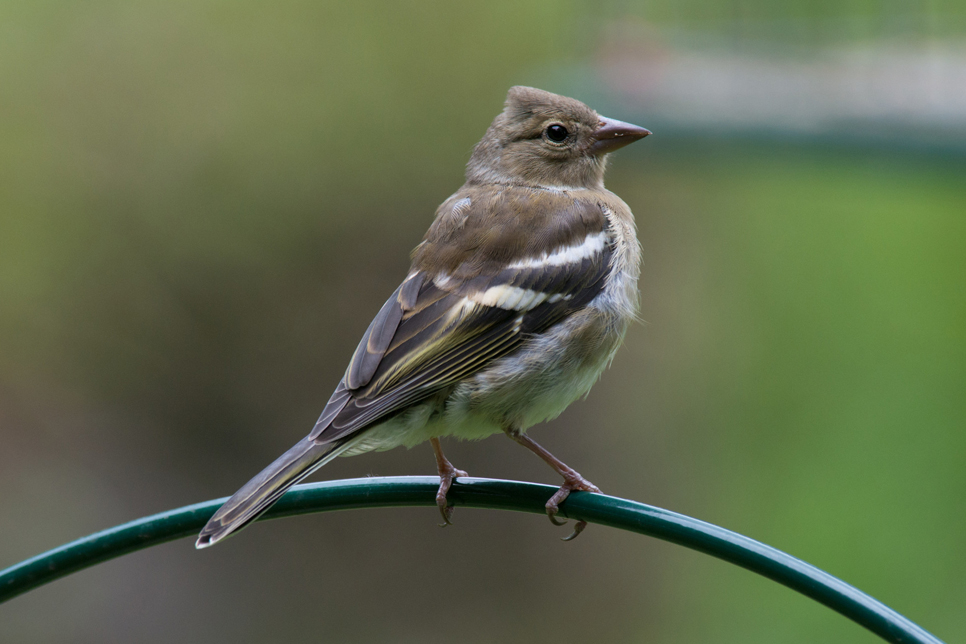
Goldfinch
These gregarious birds are often seen in larger numbers at Hawthorn Wood as summer progresses. Goldfinch fledglings have those marvellous black, gold and white wing markings but they lake the striking red and black colouring on their heads. It’s not uncommon to see a charm of young goldfinch busily tucking into the nyger seeds with a couple of adults alongside, providing a great opportunity to spot those differences.
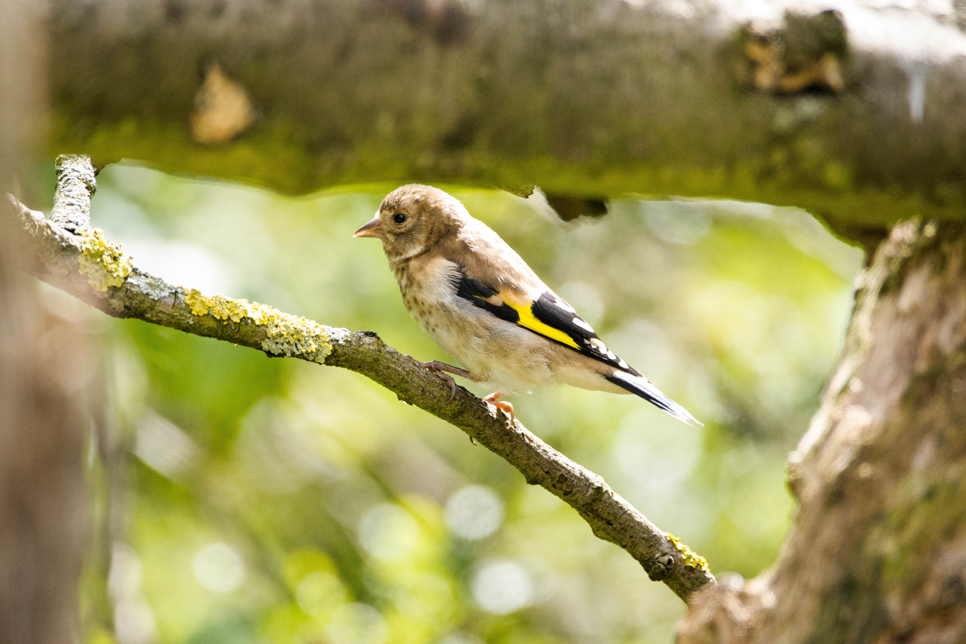
Greenfinch
As with many of the finch species, the juvenile greenfinch has colouring reminiscent of the adult female, however, it tends to be a bit streakier than the fully grown birds. This difference is quite variable, and it is subjective, so if you want to be certain it’s a fledgling look out for that begging behaviour.
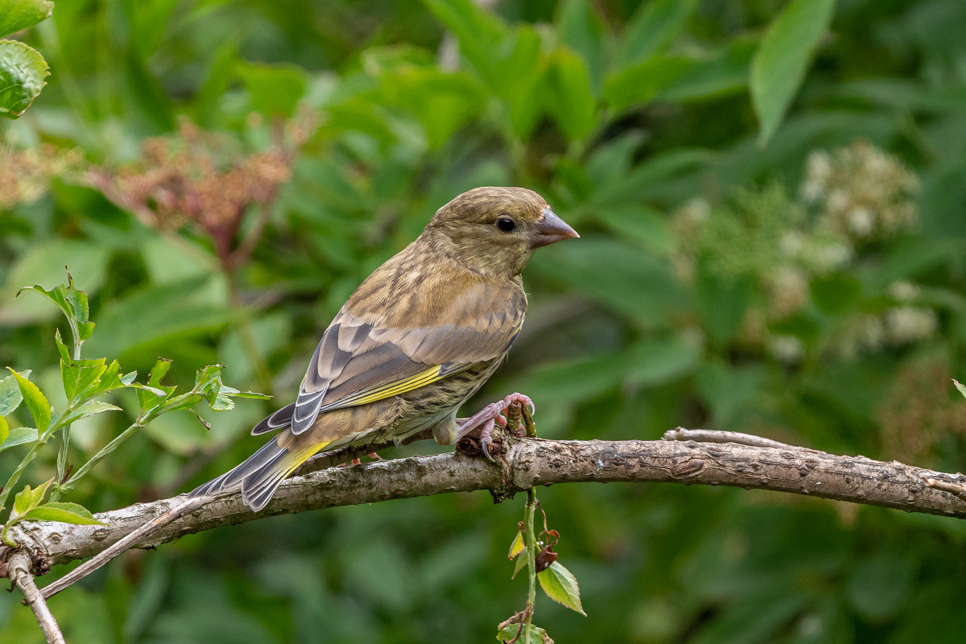
Blue tits and great tits
For me, these are probably the cutest fledglings. I describe them as looking like adults who’ve faded in the wash, with their blacks being more dusky and the yellows, blues and green having a more pastel tone than the vibrant colours of the adults. They are also probably the nosiest fledglings, constantly demanding food from the adults in the days and weeks after leaving the nest. The juvenile great tit pictured below is being fed by one of its parents - you can see the smoother fluffier plumage of the youngster compared to the darker more deshevaled look of the adult (clearly working very hard!).
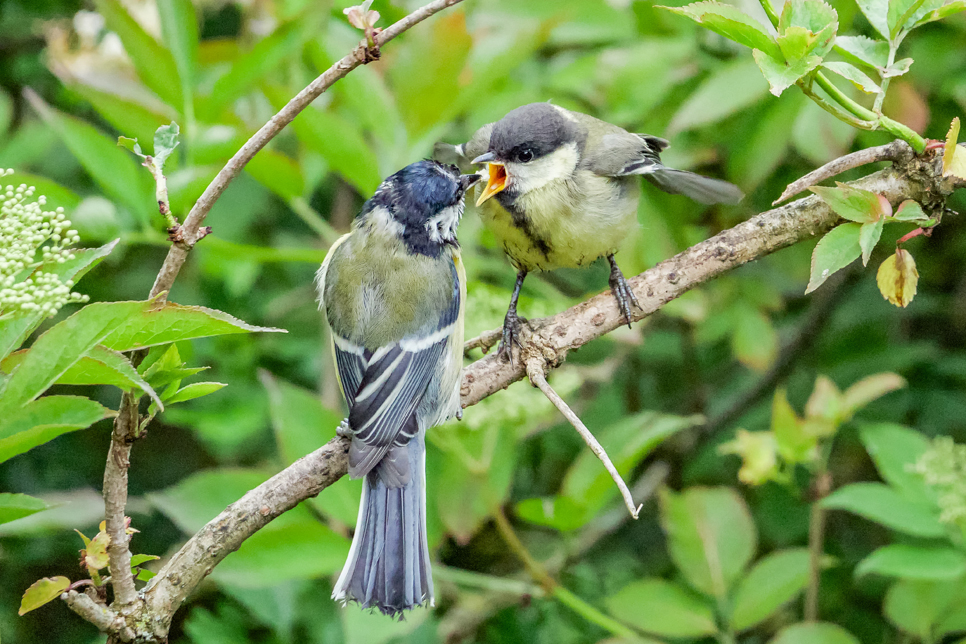
Dunnock
Juvenile dunnocks are quite similar to robins but are streakier all over. They also have a duller grey/brown head compared to a young robin. I think they are a little less brave than the robin and prefer to stay slightly secluded, so you are more likely to see them under the cover of shrubs and bushes than hopping around in open areas.
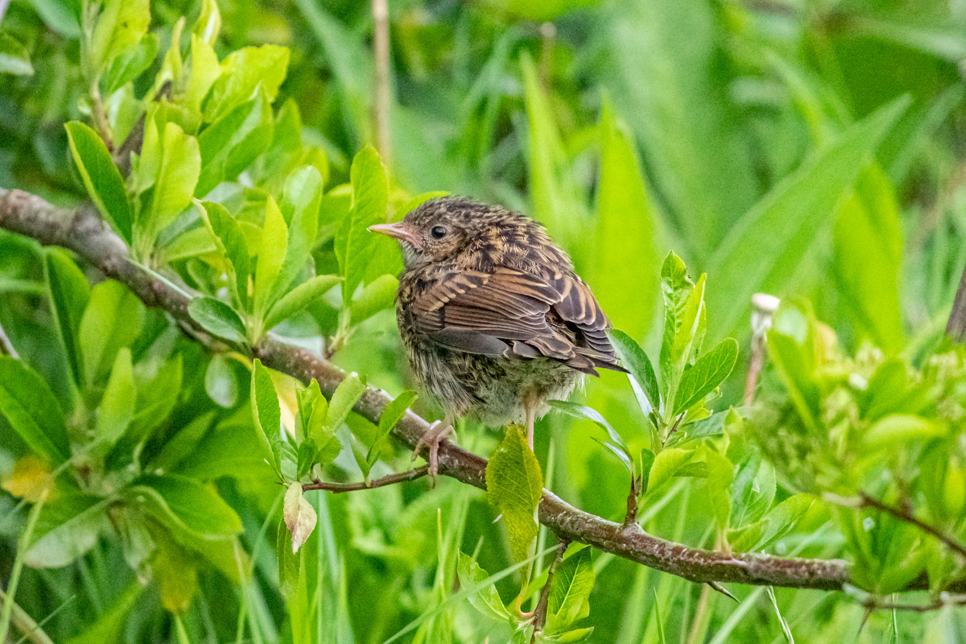
Robin
Young robins can be quite visible as they seem to share that bold and inquisitive nature often seen in the adults. They look a little dumpier than the adult bird but the distinguishing feature is a speckled chest and a slight hint of more ginger around the throat the eventually moults out to their red breast. They can be relatively independent from a young age so keep an eye out for them hopping around on the ground picking up fallen seeds from the feeders above.
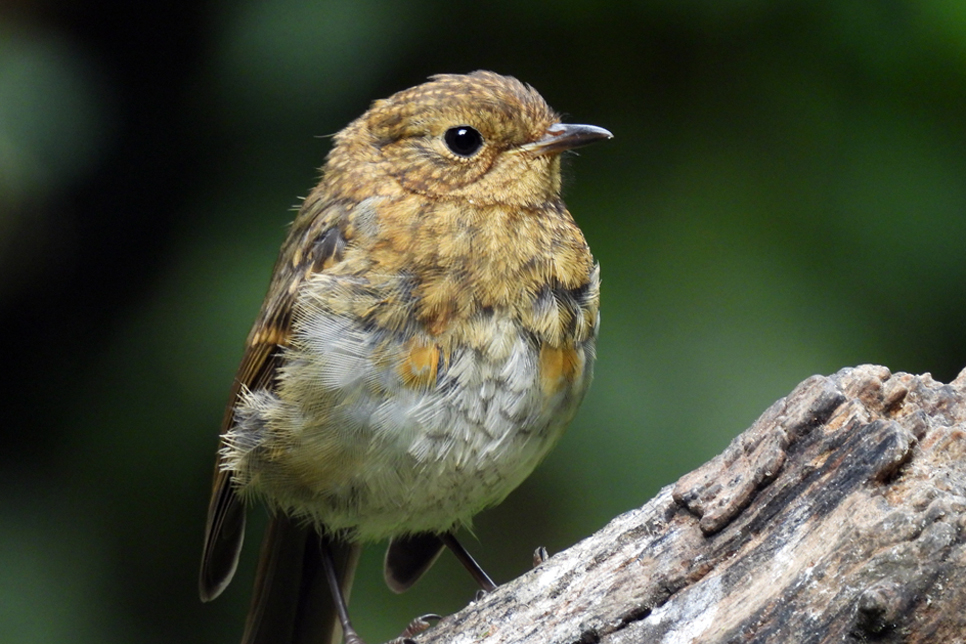
Blackbirds
A fledgling blackbird is another bird that can cause a lot of confusion. They aren’t black, but neither are they the rich brown colour of the adult female. They are brown with a spotty chest, a dappled head and brown flight feathers and tail. The spots aren’t as well defined as you’d see on a song thrush and they don’t have the cream face typical of that species, so these are key features to look out for in identification. Even when they get their adult feathers, young blackbirds don’t get the bright yellow/orange bill and eye ring until they are ready to breed, so many of the birds you’ll see over winter are first year birds and not the migratory birds from Europe that people often think they are.
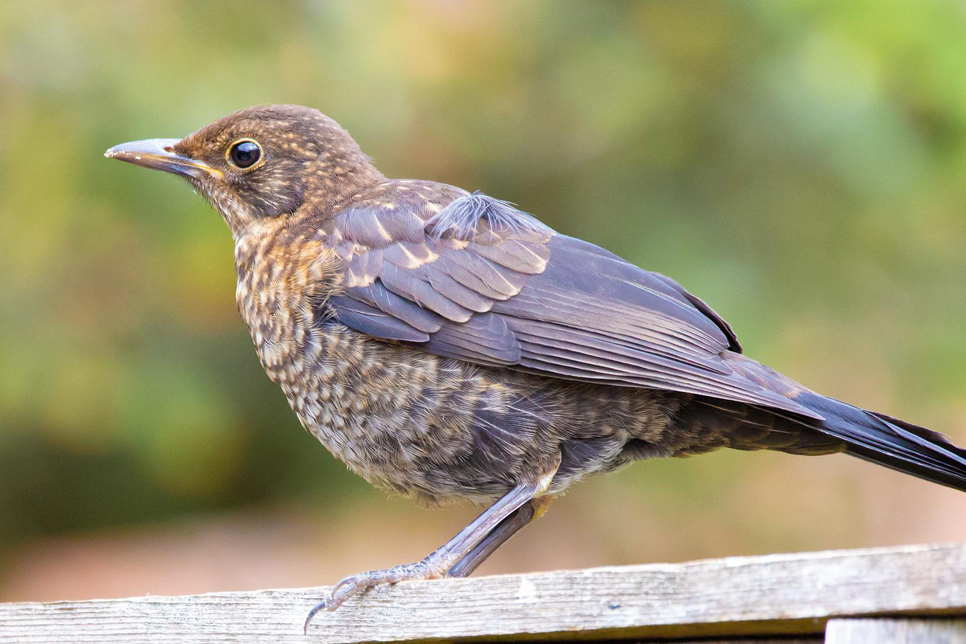
Great-spotted woodpecker
One of the best thing about Hawthorn Wood is the regular visit from great-spotted woodpeckers. In the winter we may have three pairs at any one time, but across summer it will be dominated by a single pair who are quite persistent when it comes to chasing interlopers away. They often bring their fledglings down to the feeders and transfer peanuts or bird cake to them. Where females have a black head stripe and males have a red patch on their nape, fledglings have a completely red ‘mohawk’, making them easy to identify. The image below shows a male great-spotted woodpecker on babysitting duties feeding a juvenile - taken by visitor John Tindle.
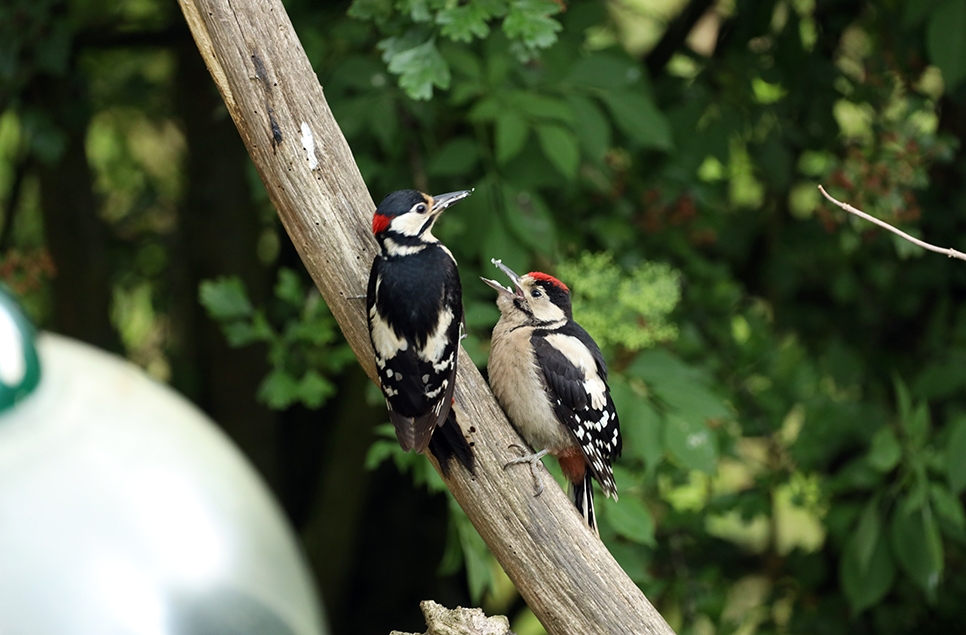
There are many other species of bird you can see at Hawthorn Wood including the nationally scarce willow wit and stock dove as well as tree creepers and nuthatch, but the youngsters of these species are almost impossible to distinguish from adults by sight alone. If you’re not sure which bird it is you’ve seen, we’re always on hand to help. Ask any of us on site or share a photo and we’ll do our best to identify it for you!
Ready to visit?
If you've been inspired to explore Washington Wetland Centre, find out more and plan your visit online.
Plan your visit